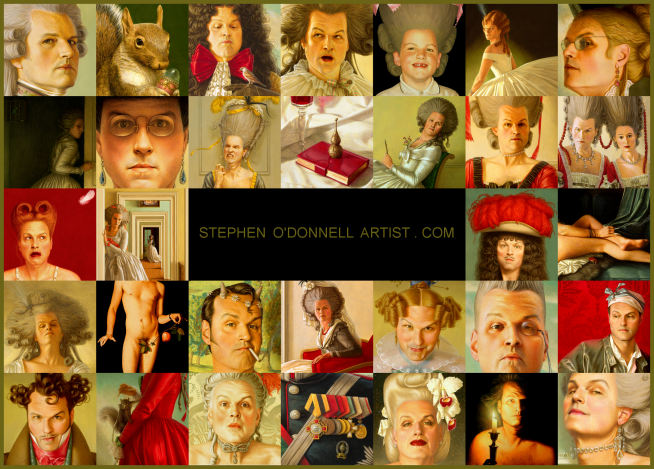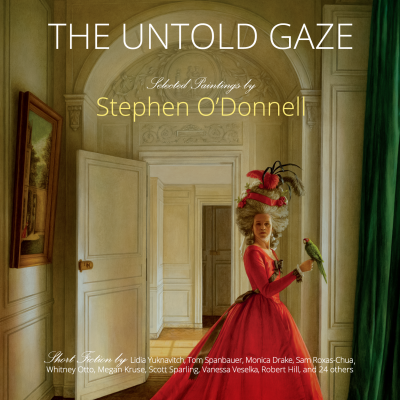 |
| All album leaves, ink and colors on silk, 33.3 x 27.8 cm. |
From the National Palace Museum website (slightly adapted):
The richness of Giuseppe Castiglione's bird-and-flower painting is marked by its difference from traditional Chinese methods. Forms often consist of shapes gradually built up with very few of the outlines normally seen in Chinese painting. "Immortal Blossoms in an Everlasting Spring" in the National Palace Museum collection is a typical example of such. In this album of paintings in ink and colors on silk, eight of them deal with flowers and the other eight bird-and-flower combinations. The last leaf is signed in "Song-script", "Reverently painted by Your Servitor, Láng Shìníng (Giuseppe Castiglione)." The precise forms rendered from life with bright and beautiful colors make this representative of a new model for academic painting that Castiglione formulated at the Qing court.
Giuseppe Castiglione's solid foundation in Western methods of painting from life can be found throughout this album, such as the delicate gradations for the peony petals and the attention placed on treating areas of color. The petals of white magnolia and cockscomb twist and turn in shades of color, the details fully revealing shadows that demonstrate the artist's focus with a source of light. The birds depicted in these album leaves are also quite varied and animated, their eyes spirited and highlighted with white pigment. White coloring was also used for the rocks and branches to suggest brightness and a sense of volume. The depictions of birds and flowers find comparison with those on imperial painted-enamel porcelains, testifying to the circulation and application of designs in different art forms at the Qing court.
This set of sixteen album leaves includes the following flowers, fruit, or plants: tree peony, peach blossom, herbaceous peony, flowering crab apple and magnolia, corn poppy and fringed iris, yellow prickly rose, carnation, cherry, poppy, purple and white lilacs, tiger lily and peony blossom, bamboo and morning glory, lotus and arrowhead, pea blossom and millet, cockscomb, and chrysanthemum. Eight of the leaves also include birds, the contents corresponding to a record of a painting entitled "Album of Flowers" by Giuseppe Castiglione in Third Edition of Treasured Boxes from the Stone Moat, one of the Qing court catalogues. The opposing leaves for each painting here are blank. Judging from the painting style, it would appear to be a masterpiece from the Yongzheng reign (1723-1735). Castiglione not only painted the sixteen leaves in this album with meticulous care and coloring, the compositions are also quite innovative. In particular, he was able to reach beyond the traditional portrayal of birds in Chinese painting to achieve fantastic results in Western perspective and shading as well. Many places in the depiction of the birds and flowers reveal touches of light and shadow, the artist showing adept skill at using white pigment to highlight bright areas. The style throughout again relates to Castiglione's early Yongzheng manner.

















*
Giuseppe Castiglione, (simplified Chinese: 郞世宁; traditional Chinese: 郞世寧; pinyin: Láng Shìníng; 19 July 1688, Milan - 17 July 1766, Beijing), Italian Jesuit brother and missionary in China, where he served as an artist at the imperial court of three emperors - the Kangxi, Yongzheng, and Qianlong emperors - painting in a style that is a fusion of European and Chinese traditions. Born into a wealthy family, he was educated at home with a private tutor, also learning to paint under the guidance of a master. At the age of nineteen, he entered the Society of Jesus in Genoa; although a Jesuit, he was never ordained as a priest, instead joining as a lay brother. In the late seventeenth century, a number of European Jesuit painters were serving at the Chinese imperial court and, early in the next century, he accepted the request of the Jesuits in China to come and work at the court in Beijing. He spent several years completing commissions in Portugal before he finally arrived in China, landing in Macau in 1715 at the age of twenty-seven. He was presented to the Kangxi Emperor, assigned assistants, and put to work. The following reign was a difficult period for Jesuits as Christianity was suppressed and those missionaries not working for the emperor were expelled. But his skill was much appreciated by the Qianlong Emperor who came to the throne in 1735, and Castiglione served the Emperor for three decades, being granted increasingly higher official rank within the Qing court. He was also in charge of designing the Western-Style Palaces in the imperial gardens of the Old Summer Palace. (Sadly, the buildings were destroyed in 1860 during the Second Opium War.) He died two days before his seventy-eighth birthday. An obituary was personally written by the Emperor, who also erected a special stone in Castiglione's memory.

Thank you to my friend Stephen Rutledge for the introduction to this artist.




























































